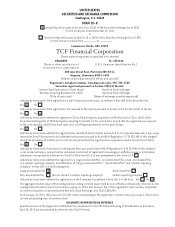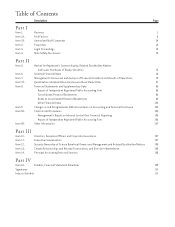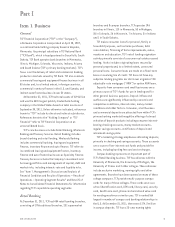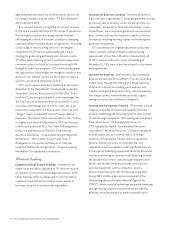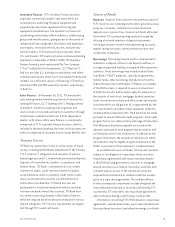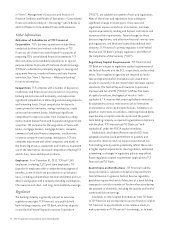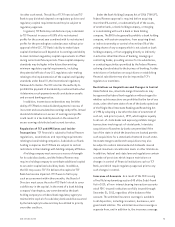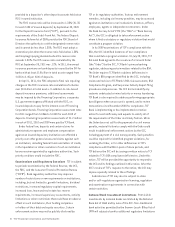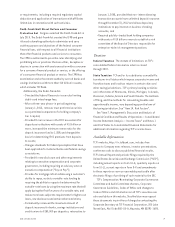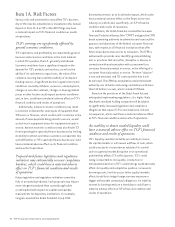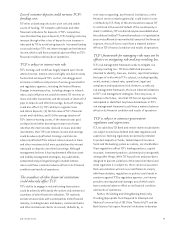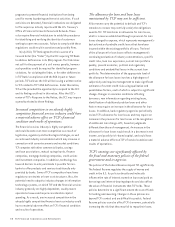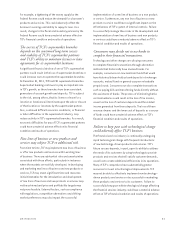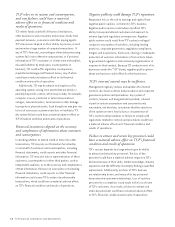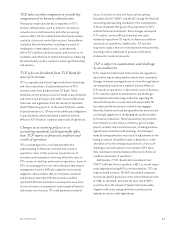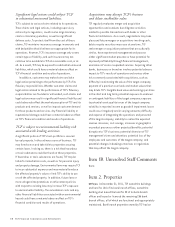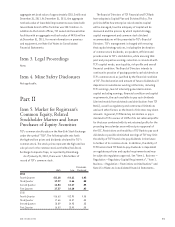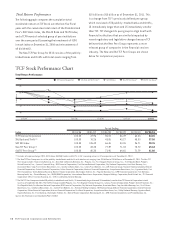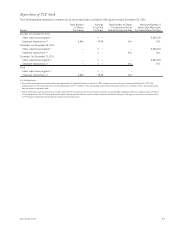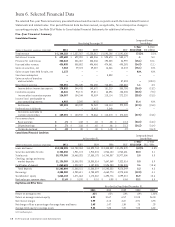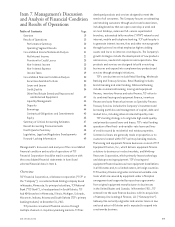TCF Bank 2011 Annual Report Download - page 27
Download and view the complete annual report
Please find page 27 of the 2011 TCF Bank annual report below. You can navigate through the pages in the report by either clicking on the pages listed below, or by using the keyword search tool below to find specific information within the annual report.Loss of customer deposits could increase TCF’s
funding costs.
TCF relies on bank deposits to be a low cost and stable
source of funding. TCF competes with banks and other
financial institutions for deposits. If TCF’s competitors
raise the rates they pay on deposits, TCF’s funding costs may
increase through either a loss of deposits or an increase in
rates paid by TCF to avoid losing deposits. Increased funding
costs could reduce TCF’s net interest margin and net interest
income, which could have a material adverse effect on TCF’s
financial condition and results of operations.
TCF is subject to interest-rate risk.
TCF’s earnings and cash flows largely depend upon its net
interest income. Interest rates are highly sensitive to many
factors that are beyond TCF’s control, including general
economic conditions and policies of various governmental
and regulatory agencies, including the Federal Reserve.
Changes in monetary policy, including changes in interest
rates, could influence not only the interest TCF receives on
loans and other investments and the amount of interest TCF
pays on deposits and other borrowings, but such changes
could also affect: (i) TCF’s ability to originate loans
and obtain deposits; (ii) the fair value of TCF’s financial
assets and liabilities; and (iii) the average duration of
TCF’s interest-earning assets. If the interest rates paid
on deposits and other borrowings increase at a faster
rate than the interest rates received on loans and other
investments, then TCF’s net interest income and earnings
could be adversely affected. Earnings could also be
adversely affected if the interest rates received on loans
and other investments fall more quickly than the interest
rates paid on deposits and other borrowings. Although
management believes it has implemented effective asset
and liability management strategies, any substantial,
unexpected and prolonged change in market interest
rates could have a material adverse effect on its financial
condition and results of operations.
The soundness of other financial institutions
could adversely affect TCF.
TCF’s ability to engage in routine funding transactions
could be adversely affected by the actions and commercial
soundness of other financial institutions. TCF routinely
executes transactions with counterparties in the financial
industry, including brokers and dealers, commercial banks
and other institutional clients. As a result, defaults by, or
even rumors regarding, any financial institutions, or the
financial services industry generally, could lead to losses
or defaults by TCF. Many of these transactions expose TCF
to credit risk in the event of default of the counterparty or
client. In addition, TCF’s credit risk may be exacerbated when
the collateral held by TCF cannot be realized or is liquidated at
prices not sufficient to recover the full amount of the financial
exposure. Any such losses could have a material adverse
effect on TCF’s financial condition and results of operations.
TCF’s framework for managing risks may not be
effective in mitigating risk and any resulting loss.
TCF’s risk management framework seeks to mitigate risk
and any resulting loss. TCF has established processes
intended to identify, measure, monitor, report and analyze
the types of risk to which TCF is subject, including liquidity,
credit, market, interest rate, operational, legal and
compliance and reputational risk. However, as with any
risk management framework, there are inherent limitations
to TCF’s risk management strategies. There may exist, or
develop in the future, risks that TCF has not appropriately
anticipated or identified. Any future breakdowns in TCF’s
risk management framework could have a material adverse
effect on its financial condition and results of operations.
TCF is subject to extensive government
regulation and supervision.
TCF, its subsidiary TCF Bank and certain indirect subsidiaries
are subject to extensive federal and state regulation and
supervision. Banking regulations are primarily intended
to protect depositors’ funds, federal deposit insurance
funds and the banking system as a whole, not stockholders.
These regulations affect TCF’s lending practices, capital
structure, investment practices, dividend policy and growth,
among other things. While TCF has policies and procedures
designed to prevent violations of the extensive federal and
state regulation it is subject to, there can be no assurance
that such violations will not occur and failure to comply
with these statutes, regulations or policies could result in
sanctions against TCF by regulatory agencies, civil money
penalties and reputational damage, any of which could
have a material adverse effect on its financial condition
and results of operations.
Further, the Uniting and Strengthening America by
Providing Appropriate Tools Required to Intercept and
Obstruct Terrorism Act of 2001 (the “Patriot Act”) and the
Bank Secrecy Act require financial institutions to develop
92011 Form 10-K


